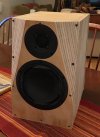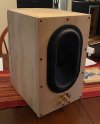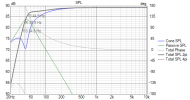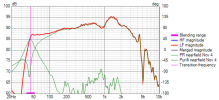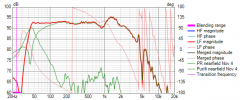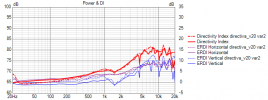Meanwhile, a quick look at crossovers... As mentioned above, we'll need to know how much volume to reserve for the passive crossover (if it's to be inside the enclosure). And the DC resistance on the Purifi side (which is higher if using inductors that take up less volume) affects the bass alignment.
I'm prototyping with DSP, both to be able to listen

and also to sanity-check approaches. I'm starting by sticking to DSP functions that are nominally available with passive components, which means no delays and no boost (notch filters OK, peak filters not OK).
Here's an example that looks promising. Note the two blocks shorted out that didn't seem worth the component count - especially the notch at 725 Hz that would require a very big inductor. The plan here is, using DSP, to
- measure (validate the model)
- listen (be sure we're happy!)
- design the passive crossover starting with an approximation of the DSP
- decide on crossover placement and finalize the enclosure volume
View attachment 331732

